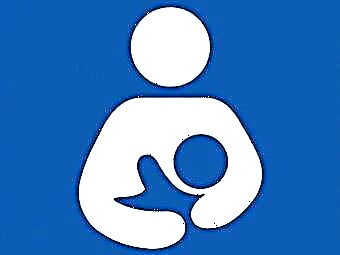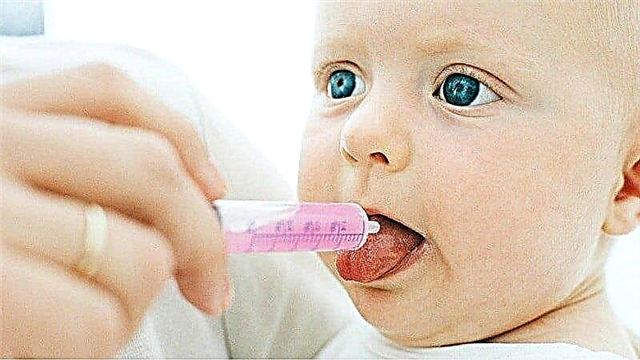
Pregnancy test manufacturers point out that testing is best done in the morning. But for various reasons, there is not always such an opportunity, and then a reasonable question arises - is it possible to carry out diagnostics in the evening, whether such a result will be accurate.

The relationship between time of day and test performance
There are different test systems - the familiar and familiar to many strip-strips, cassette and inkjet models, digital. They differ in cost, diagnostic procedure, but the principle of operation of all test systems is exactly the same - special reagents determine the presence of a specific hormone in women's urine - chorionic gonadotropin (or simply hCG).
This hormone does not begin to be produced immediately after conception, but only after the embryo is able to implant into the uterine wall, into its endometrial layer.
Implantation usually occurs one week after conception (6 to 9 days - medium range). Then, every two days, the hCG level doubles, and by the end of the cycle (closer to the date of the expected start of menstruation), for the first time, it can be determined in the blood and urine of a pregnant woman. If the hCG level exceeds the sensitivity threshold of the test system, a second bar appears. If not, the result is negative.


Morning testing is recommended because morning urine after a long night's sleep is denser, more concentrated, and contains more hCG molecules. But this does not mean that evening testing shows false results. It's just that in the evening there are more chances of getting an inaccurate result, especially when it comes to the early stages before the delay, when the concentration of hCG is low even in the morning. During the day, a woman drinks liquid, goes to the toilet, and the concentration of substances in evening urine is always lower.
After a delay, if there is a pregnancy, home test systems usually show a positive result at any time of the day - and in the morning, afternoon, and evening. Although here, too, a lot depends on which test system you decide to use.

Which system should you use?
If the goal is to find out whether pregnancy has occurred even before the start of the delay in menstruation, and there is no way to conduct a morning test, choose ultrasensitive systems. The packages of such tests usually have a sensitivity threshold. in 10-15 units. This means that they can catch the chorionic gonadotropin molecules earlier than other similar products. You can also recommend modern innovative test systems - digital, electronic. It's not about the price, and expensive tests aren't always the most accurate. The point is precisely the threshold of sensitivity. Be sure to ask the pharmacy employee for this characteristic.
It is unlikely that conventional tests, which have a sensitivity of 20 units or higher, are suitable for evening diagnostics before the delay. The fact is that the hormone may not reach such a concentration even in the morning portion of urine, and the strip will show a negative result if there is an actual pregnancy.
After the delay, it makes no difference which test to use. Usually, 3-4 days after the onset of the delay, the level of hCG, even in women who had late ovulation and late implantation, exceeds 30 mU / ml, and therefore in urine it can be determined by any system at any time, if properly tested and following the instructions for use. Times of Day.
How to diagnose in the evening?
Before testing in the evening, you need to prepare. Do not drink liquids for 3-4 hours or go to the toilet, this will help increase the density and concentration of substances in urine. Do the rest in strict accordance with the instructions. To get a result that will be reliable, you need to do everything right. Manufacturers have provided their own nuances for each type of test.
Try not to overexpose the strip in urine longer than the specified time, evaluate the results after a strictly defined period of time (usually 5-10 minutes).

Be sure to pay attention to the expiration date and the integrity of the packaging. The result of an expired product will not be correct, no matter what time of day you diagnose. Try to purchase tests at pharmacies, rather than at the supermarket checkout, where storage conditions for such products are often violated.
Pay attention to the optimal timing of the diagnosis. It makes sense to check the level of hCG in urine (and there it grows later than in the blood) only 2-3 days before the start of the delay with highly sensitive test systems. All other tests can be used from the first day of the delay.

What results can you get?
Taking an evening test, you can get different results:
- Two stripes are crisp and bright Is a clear positive result. Before the delay, such tests are infrequent, since the brightness of the test area (with the applied reagent) depends on how high the concentration of hCG in the urine is.
- Two stripes, but one faint, paler Is a weakly positive or questionable result. A weak strip indicates an increase in hCG, but insufficient brightness of the staining indicates its relatively low content. Before the delay is quite normal. You can check the data in two days, when the hCG level grows. Retesting usually shows the test strip noticeably brighter. After a delay, a weakly positive test that does not become brighter can be a marker of an ectopic pregnancy or hormonal disruption, you should definitely consult a doctor.
- One strip and barely noticeable strip - "ghost" - This test is most likely done incorrectly or its results are misinterpreted. A ghost (a grayish streak that is visible in the light when the dough is tilted) usually appears on any used product as it dries. Therefore, a test that shows such a strip 20, 30, 45 minutes after testing should be considered invalid. You need to use the product correctly.
- One strip is a negative result. A clean test zone indicates that the content of chorionic gonadotropin in urine is low, does not exceed the normal thresholds for non-pregnant women, and therefore cannot be captured by the reagent of the test zone. Before the delay, such a test can be false negative. Due to the small amount of hCG, the reagent does not stain the second band. You need to wait a little and repeat the testing after 2 days.
- Not a single strip - although this is rare, it happens. This result suggests that the product itself was out of date, unsuitable for use.
If there is no control line, this means only one thing - the test does not work.

With evening testing, paradoxical situations very often arise that raise many questions. For example, some women report that they tested negative in the morning and tested positive in the evening. This can really happen if the doubling of the hCG level occurs precisely in the interval between these two tests. In order not to doubt the result obtained in the evening, it is worth repeating the diagnosis the next morning.
remember, that after the start of the delay, the home test results are more accurate during the delay than before. But if you don't have the strength to wait, it is better not to waste your nerves and money on a lot of disposable strips to determine pregnancy. It is better to have a blood test for hCG in any clinic. It is inexpensive and results are reliable, reliable and accurate the same day or the next. HCG in the blood during pregnancy is detected earlier than in the urine, and therefore you can go for analysis within 10-11 days after ovulation.




